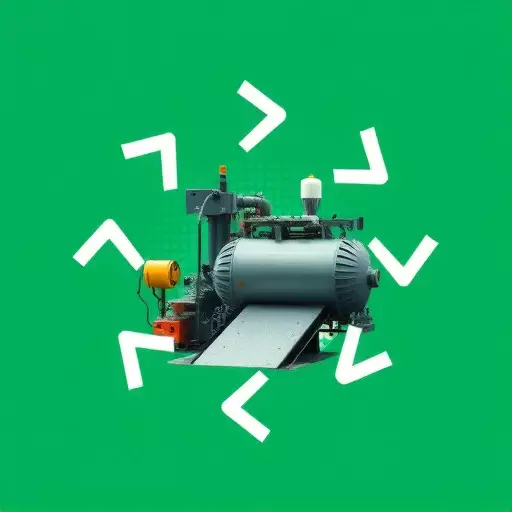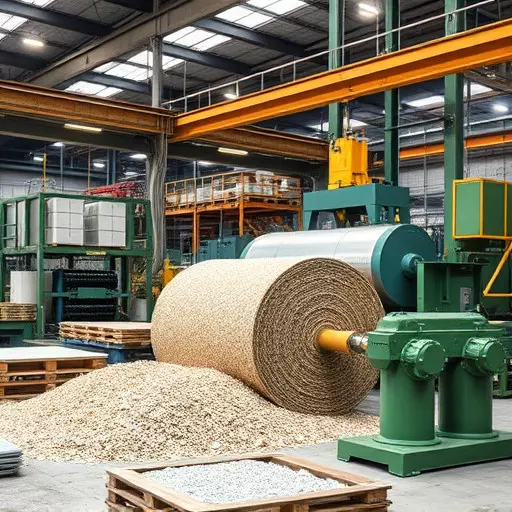Toledo is at the forefront of a quiet revolution in sustainable material processing, driving eco-friendly manufacturing and the global circular economy. By harnessing natural materials like plant fibers, wood chips, and agricultural waste, local industries create composite solutions that reduce carbon footprints, minimize waste, and open doors to innovative design across sectors. This strategic shift from traditional linear models to recycling, repurposing, and upcycling promotes economic growth, job creation, and a greener future, making Toledo a leader in eco-friendly material management.
Sustainable composites offer a green alternative to traditional materials, playing a pivotal role in Toledo’s eco-revolution. This article delves into the understanding and potential of sustainable composites, exploring their impact on the environment through eco-friendly manufacturing techniques and circular economy strategies. We examine the benefits and challenges of implementing these materials across various industries, highlighting innovative approaches to material processing in Toledo. By embracing sustainable composites, we can create a more resilient future while minimizing our ecological footprint.
- Understanding Sustainable Composites: A Green Alternative
- The Role of Material Processing in Toledo's Eco-Revolution
- Eco-Friendly Manufacturing Techniques for Composite Materials
- Embracing the Circular Economy: Recycling and Reuse Strategies
- Benefits and Challenges: Implementing Sustainable Composites in Industry
Understanding Sustainable Composites: A Green Alternative
Sustainable composites represent a significant step forward in the journey towards eco-friendly manufacturing. By harnessing the power of natural materials and innovative processing techniques, these composites offer a green alternative to traditional, often non-sustainable, material sources. The concept is rooted in the circular economy, where waste is minimized and resources are reused and recycled, promoting environmental stewardship.
In Toledo and beyond, sustainable material processing is gaining traction as an industry. This shift towards eco-friendly manufacturing not only reduces the carbon footprint of production but also opens doors to unique design possibilities. Composites made from renewable resources like plant fibers, wood chips, or agricultural waste can create strong, lightweight materials with diverse applications, from automotive components to construction materials, all while preserving natural ecosystems and promoting a more sustainable future.
The Role of Material Processing in Toledo's Eco-Revolution
In Toledo, a quiet revolution is taking place at the intersection of material science and environmental stewardship. The city’s embrace of sustainable material processing is not just a trend but a necessary step towards eco-friendly manufacturing. By leveraging advanced technologies and innovative methods, local industries are transforming how they create products, shifting away from traditional linear models towards a circular economy.
This shift is characterized by recycling, repurposing, and upcycling materials to reduce waste and minimize the environmental impact. Through strategic partnerships and collaborative efforts, Toledo’s manufacturers are exploring new avenues in composite material development. By integrating renewable resources and bio-based feedstocks into their production processes, they’re not only enhancing product sustainability but also driving economic growth and job creation within a green sector.
Eco-Friendly Manufacturing Techniques for Composite Materials
In the pursuit of a greener future, eco-friendly manufacturing techniques are transforming the way composite materials are produced. Sustainable material processing in Toledo and beyond is embracing innovative methods that minimize environmental impact while maximizing resource efficiency. These approaches not only reduce emissions and waste but also contribute to the circular economy by recycling and reusing materials.
One prominent trend is the integration of bio-based feedstocks, replacing traditional petroleum-derived composites. This shift towards renewable resources not only diminishes reliance on non-sustainable materials but also offers comparable performance characteristics. Additionally, advanced manufacturing processes are optimizing production efficiency, allowing for more precise control over material properties and reducing energy consumption. Such developments underscore the industry’s commitment to sustainable material processing, paving the way for a greener and more prosperous future within the circular economy.
Embracing the Circular Economy: Recycling and Reuse Strategies
In the pursuit of a greener future, the concept of the circular economy is transforming industries worldwide, and sustainable material processing in Toledo is at the forefront of this revolution. This approach emphasizes recycling and reuse strategies, aiming to minimize waste and maximize resource efficiency. By adopting eco-friendly manufacturing practices, composites can be designed for easy disassembly, allowing components to be recycled or repurposed, thus reducing the demand for virgin materials.
Toledo’s composite manufacturers are exploring innovative ways to incorporate recycled content into their products, contributing to a closed-loop system. This involves developing efficient recycling processes for composite waste and integrating them into the production lines. Such strategies not only benefit the environment but also offer economic advantages, as they can reduce manufacturing costs and create new business opportunities centered around eco-friendly material management.
Benefits and Challenges: Implementing Sustainable Composites in Industry
Implementing sustainable composites in industry presents a myriad of benefits aligned with environmental stewardship and economic viability. Eco-friendly manufacturing techniques, such as those employed in Toledo’s thriving sustainable material processing sector, offer reduced carbon footprints by minimizing energy consumption and waste generation. Composites, derived from renewable resources or recycled materials, contribute to the circular economy by extending product lifespans and decreasing reliance on finite virgin resources. These materials are also lightweight, stronger, and more versatile than traditional options, enabling innovation in design and performance across various sectors.
However, transitioning to sustainable composites is not without challenges. Cost considerations remain a significant hurdle, often requiring substantial upfront investments in new technologies, equipment, and infrastructure. Supply chain disruptions and the availability of consistent, high-quality feedstocks can also impede adoption. Moreover, ensuring compatibility with existing manufacturing processes and materials requires meticulous research and development. Despite these obstacles, growing consumer demand for eco-friendly products and stringent environmental regulations are driving industries to embrace sustainable composites as a game-changer in material processing.


